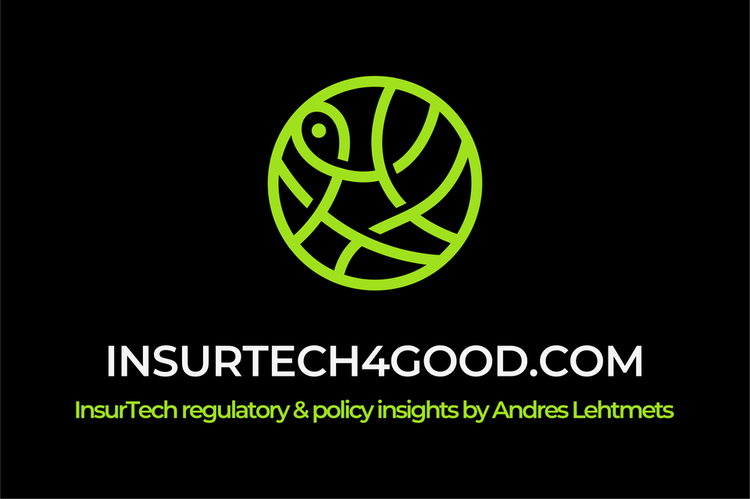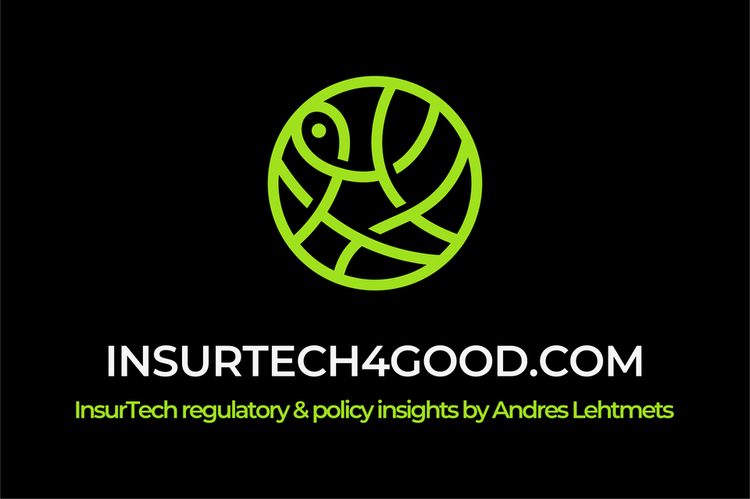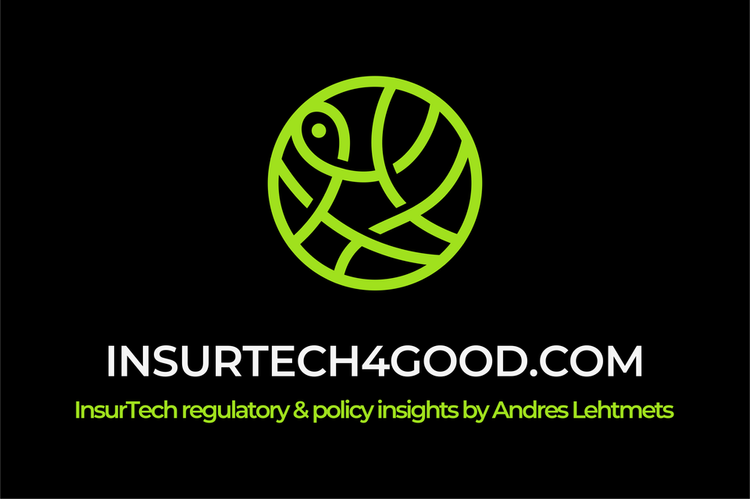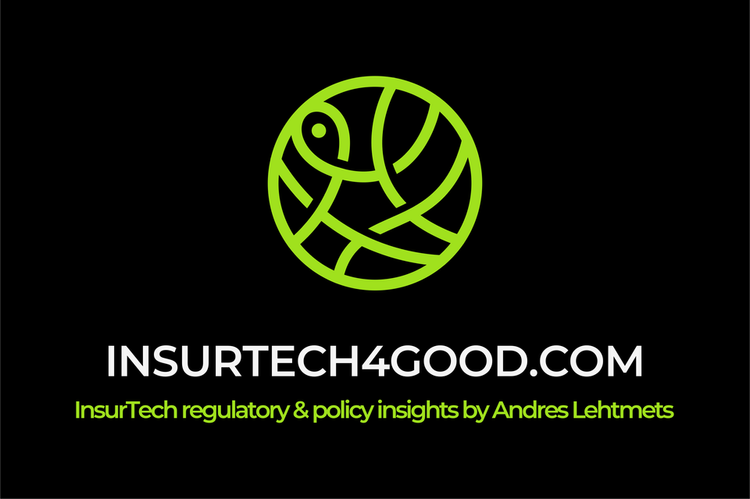InsurTech4Good Weekly Newsletter – #12, 2025

My weekly newsletter is here again, with quite a lot of interesting reading.
This time, I start with the European Commission’s Savings and Investment Union and its link to insurance, finance, and innovation. Among other objectives, the goal is to increase participation in supplementary pensions to ensure adequate retirement income and improve pension funds’ ability to channel household savings into productive and innovative investments.
This also includes work on pension tracking systems, which have a clear link to data sharing and open insurance.
Furthermore, the strategy aims to promote investment in equity and certain alternative asset classes such as venture capital, private equity, and infrastructure.
Another very interesting article examines how we should assess risks in financial innovation—and that a lack of innovation is a risk in itself. A compulsory read, in my opinion.
Furthermore, Distributed Ledger Technology (DLT) seems to be back on the tech agenda, and I highlight some insurance use cases.
We then move to the AI Act and explore how it interacts with insurance regulation (I can already say that there is a lot of uncertainty, but work continues on different fronts).
The final article explores the potential competitive implications of non-horizontal mergers, particularly when they involve extensive consumer data, including financial data.
By the way, do you find this newsletter useful? Or am I just writing it for myself? Which, to be fair, wouldn’t be a bad outcome—it’s a great way to stay up to speed on recent developments, and writing helps to process ideas more effectively.
Let me know!
Have a good week!
Andres Lehtmets
Savings and Investments Union: Focus on Insurance and Pensions
The European Commission has adopted its strategy for the Savings and Investments Union (SIU). The SIU aims to create better financial opportunities for EU citizens while enhancing the financial system’s ability to connect savings with productive investments. This will provide savers with more choices to grow their household wealth and enable businesses across Europe to expand.
One key aspect of the strategy is the development of the supplementary pension sector, which includes two concrete policy measures:
- Best practices and recommendations: By Q4 2025, the Commission will issue recommendations on the use of and best practices for auto-enrolment, pension tracking systems, and pension dashboards. These recommendations will highlight best practices and lessons learned from across the EU and encourage the development of such tools.
- Review of existing pension frameworks: By Q4 2025, the Commission will review the existing EU frameworks for Institutions for Occupational Retirement Provision (IORPs) and the Pan-European Personal Pension Product (PEPP). The goal is to increase participation in supplementary pensions to ensure adequate retirement income and improve pension funds’ ability to channel household savings into productive and innovative investments.
The SIU strategy also focuses on promoting investment in equity and certain alternative asset classes. Institutional investors, such as insurers and pension funds, play a crucial role in the EU’s financial system but are generally less active in equity markets and alternative assets such as venture capital, private equity, and infrastructure. The Strategy tries to address that.
Finally, the Citizens and Savings segment of the strategy emphasizes financial empowerment. The Commission will facilitate an agreement between Parliament and the Council on the Retail Investment Strategy. However, if negotiations fail to meet the strategy’s intended objectives, the Commission will not hesitate to withdraw the proposal.
Additionally, by Q3 2025, the Commission will adopt a financial literacy strategy to empower citizens, raise awareness, and increase participation in capital markets, fostering a more investment-savvy culture across the EU.
Read more here.
Distributed Ledger Technology in the Financial Sector
Distributed Ledger Technology (DLT) seems to be back on the tech agenda, but do we really have any tangible use cases in insurance?
This paper explores the potential of DLT to transform the financial landscape by enhancing efficiency, transparency, and innovation.
Among other things, it highlights two detailed insurance case studies, focusing on both the solution mechanisms and, most importantly, the rationale for adopting DLT.
1. Cross-Border Claims Settlement Solution – A system that streamlines European cross-border motor claims across 25 organizational silos, improving governance in a frictionless way.
2. Motor Insurance DLT-Based Authentication System (MIDAS) – The first industry-wide DLT application for insurance in Asia, enabling motor insurance authentication without disclosing personal information.
Read this full Hong Kong Monetary Authority paper here.
Navigating Europe’s AI Act: Insights for Actuaries and the Insurance Sector
We still have a lot of work to do to understand the implications of the AI Act for the insurance sector, particularly its interaction with existing sector-specific insurance legislation such as Solvency II and IDD, as well as horizontal acts like DORA and GDPR.
The interplay between these frameworks is crucial, yet significant uncertainty remains. It is essential to ensure the effective application of sectoral legislation while considering proportionality and the specificities of the insurance industry.
This discussion paper explores the AI Act—the world’s first comprehensive regulatory framework for artificial intelligence—from an actuarial perspective.
In addition to examining the intersection of the AI Act with other regulatory frameworks, it delves into the Act’s risk-based approach to categorizing AI systems, its implications for the insurance and risk management sectors, and its specific relevance to actuarial practices.
It also highlights the role of actuaries in ensuring that AI systems are transparent, ethical, and aligned with both societal and organizational goals.
The insights provided aim to guide professionals in navigating the complexities of AI governance while leveraging its potential to drive innovation and enhance risk management.
Read more here.
How risk will preserve the future of finance
This article argues that as financial institutions introduce artificial intelligence into their own systems, they must proactively and responsibly engage with new risks—all while maintaining security and resiliency. A compulsory read for regulators, incumbent financial institutions, and innovators alike in my opinion.
I have always advocated for innovation (partly due to my Estonian background), even when it meant taking risks in policy and regulation to challenge the status quo. But not just for the sake of technology or innovation itself—far from it. What I strongly believe is that innovation is essential for addressing structural problems in finance (such as complexity) and broader societal challenges, including aging populations, generational shifts, and climate change.
This belief and this recent article led me to reconsider a fundamental question: How much risk should we, as a society, be willing to take? What about financial regulators and policymakers? Consumers? Citizens? And I believe we should take more. Innovation requires taking risks, and that sometimes means failure. However, if we can agree on acceptable risk tolerances, then I believe it’s a risk worth taking.
Personally, I’d love to see more of this debate at the EU level, including discussions on the role of supervisors. The broader simplification agenda—a Bolder, Simpler, Faster Union and Moving Forward Together (with an emphasis on together)—provides a great opportunity for this.
Read more here.
Consumer financial data and non-horizontal mergers
This article explores the potential competitive implications of non-horizontal mergers where they involve extensive consumer data, including consumer financial data.
As data become increasingly central to firm strategy, mergers between data-rich firms, while potentially leading to positive outcomes, can also create market power in ways not entirely accounted for by traditional antitrust theory.
The article considers some of these implications. It introduces new metrics for valuing data sets held by merging firms that could help competition authorities evaluate market impacts more effectively.
The article then suggests potential tools to mitigate anti-competitive effects of data-rich mergers. It advocates for further research to adapt competition policy to data-centric mergers, all with a view to maintaining open, innovative and competitive markets in the digital and data economy.
Read more here.
How can I help you?
Thank you for reading! If you think I can help you, please do not hesitate to contact me.
- Feel free to reach out if you need regulatory strategy and advice, InsurTech research, thought leadership, advertorial content, or assistance with policy advisory.
- Subscribe to this free weekly newsletter, where I share the latest insights on InsurTech regulations, policies, and business models.
- Follow me on LinkedIn, where I post daily updates and insights on InsurTech.
- Invite me to speak at your event if you're looking for someone who can bridge the worlds of insurance innovation and regulation.





Member discussion